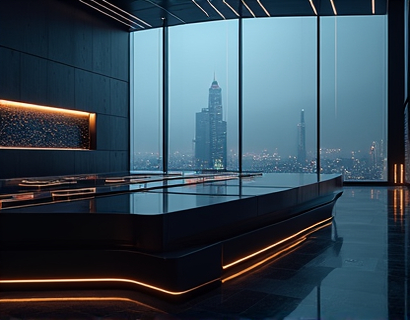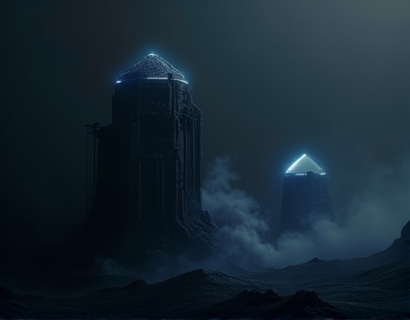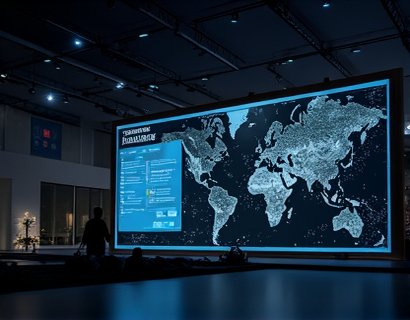Streamlining Web Development with Custom Placeholder Code Generators
In the fast-paced world of web development, efficiency and productivity are paramount. One innovative tool that can significantly enhance the development process is a custom placeholder code generator. This tool is designed to save time, boost efficiency, and create professional, visually appealing content with ease. For developers, designers, and business owners, having access to customizable templates and placeholder code can transform the way websites are designed and developed.
The primary goal of a custom placeholder code generator is to provide a quick and easy way to populate a website's structure with dummy content. This content serves as a placeholder, allowing developers and designers to focus on the layout, design, and functionality without getting bogged down by the need to create real content from scratch. By using placeholder text and images, teams can rapidly prototype and test their website's design and user experience.
Benefits of Using a Custom Placeholder Code Generator
One of the most significant advantages of using a custom placeholder code generator is the time savings it offers. Instead of manually typing out placeholder text or searching for suitable images, developers can generate this content with a few clicks. This efficiency is particularly beneficial for digital agencies and tech startups that often handle multiple projects simultaneously. By streamlining the initial setup phase, teams can allocate more time to the creative and technical aspects of web development.
Another benefit is the consistency and professionalism that placeholder content brings. Customizable templates ensure that the placeholder text and images align with the overall design vision, maintaining a cohesive look and feel from the very beginning. This is crucial for businesses aiming to present a polished and professional online presence right from the launch stage.
Customizable Templates: Tailoring Placeholder Content to Your Needs
Custom placeholder code generators offer a range of customizable templates that can be tailored to fit specific project requirements. These templates can include various elements such as headers, footers, navigation menus, and content sections. By adjusting parameters like font styles, colors, and layout configurations, users can create placeholder content that closely resembles the final product.
For instance, a business owner can select a template that matches their brand's color scheme and typography, ensuring that the placeholder content reflects the intended aesthetic. This level of customization is invaluable for designers who need to visualize how their design choices will look in a real-world context. It also helps in communicating the design vision more effectively to clients, reducing misunderstandings and revisions.
Enhancing User Experience with Placeholder Content
Placeholder content plays a crucial role in testing and refining the user experience (UX) of a website. By populating the site with realistic-looking text and images, developers can simulate user interactions and identify potential issues early in the development process. This proactive approach helps in creating a more intuitive and user-friendly interface.
For example, placeholder text can be used to test the readability and flow of content on different pages. Designers can assess how text scales and aligns within various elements, ensuring that the typography is both aesthetically pleasing and functional. Similarly, placeholder images can help in evaluating the layout and responsiveness of the design across different devices and screen sizes.
Tools and Features of a Robust Placeholder Code Generator
A robust placeholder code generator should offer a variety of tools and features to cater to the diverse needs of developers and designers. Some key features include:
- Customizable Text Styles: Options to adjust font family, size, color, and alignment to match the desired design.
- Image Placeholders: Ability to insert placeholder images that can be styled with CSS, including background colors, borders, and shadows.
- Responsive Design: Generated content should adapt seamlessly to different screen sizes and devices, ensuring a consistent user experience.
- Content Sections: Predefined sections for headers, paragraphs, lists, and forms, which can be easily combined and modified.
- Export Options: The ability to export the generated code in various formats, such as HTML, CSS, and JavaScript, for easy integration into existing projects.
These features collectively enhance the versatility and utility of a placeholder code generator, making it an indispensable tool in the web development toolkit.
Use Cases for Placeholder Code Generators
Placeholder code generators are applicable across a wide range of web development scenarios. Here are some specific use cases:
Digital Agencies
Digital agencies often work on multiple projects at once, each with unique design requirements. A placeholder code generator allows agency developers to quickly set up new projects with consistent placeholder content, saving time and ensuring a uniform starting point for each site.
Tech Startups
For tech startups, rapid prototyping and iteration are essential for bringing products to market quickly. Placeholder code generators enable startups to focus on core functionalities and user feedback without getting stuck on content creation.
E-commerce Businesses
E-commerce sites require detailed product listings, user reviews, and other dynamic content. Placeholder code generators can help e-commerce businesses create a solid foundation with realistic product images and descriptions, facilitating better testing and user engagement.
Freelancers and Small Teams
Freelancers and small development teams can leverage placeholder code generators to deliver high-quality work efficiently. These tools help in managing client expectations by providing a clear and professional starting point for web projects.
Best Practices for Using Placeholder Code Generators
To maximize the benefits of a placeholder code generator, it's important to follow best practices:
First, always keep the placeholder content relevant to the final content type. For example, use realistic product descriptions and images for e-commerce sites, and coherent paragraphs for blog posts. This helps in maintaining the integrity of the design and UX.
Second, regularly review and update the placeholder content as the design evolves. As the layout and elements change, the placeholder should adapt to reflect these changes accurately.
Lastly, use placeholder content as a temporary solution. Once the real content is ready, replace the placeholders with actual text and images to ensure the site functions as intended.
Conclusion
A custom placeholder code generator is a powerful tool that can significantly streamline the web development process. By providing customizable templates and efficient content generation, it saves time, enhances productivity, and ensures a professional look from the start. Whether you're a developer, designer, or business owner, incorporating such a tool into your workflow can lead to more successful and efficient web projects.











































